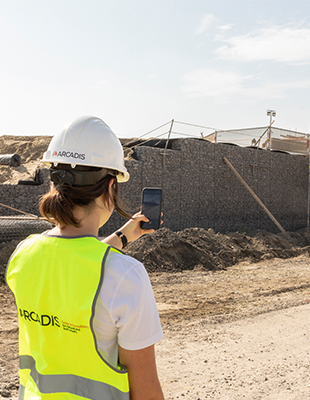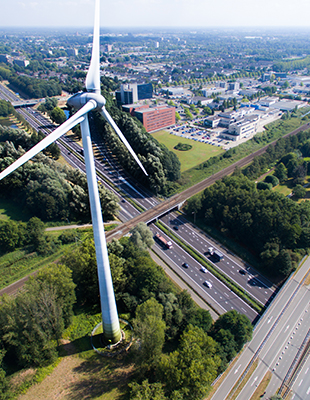Table of Contents
The challenge
There are lots of traffic jams and accidents on the Ring around Brussels every day. It is also outdated.
115
The Ring around Brussels (R0) is an important traffic artery for commuting to the Belgian capital, as well as for long-distance traffic to the rest of the country. However, the Ring was designed for traffic from the previous century with little attention to cyclists, pedestrians, and public transportation. The pressure on surrounding residential areas has also increased, and there is barely any space for greenery. Accidents on the Ring almost immediately lead to large-scale traffic congestion in the entire region. Adjustments to meet the needs of today are necessary.
The solution
The Flemish Government therefore wants to redevelop the R0 and its adjoining infrastructure, as well as tackle traffic on smaller roads and the fragmented green landscape.
35
With the program ‘Work on the Ring Road’ De Werkvennootschap (the Flemish Government) is addressing these issues. Under the name 'MoVeR0', Arcadis and Sweco were appointed in 2017 to guide the redesign of Ring North from feasibility studies to completion.
In collaboration with other partners, we will provide traffic studies, technical designs (roads, structures, and other infrastructure), process guidance, advice on tenders, and support for stakeholder management and communication within a 12-year contract. Consultations with local stakeholders such as pedestrian and cycling movements, surrounding municipalities and their residents, and public transport companies are crucial throughout the entire process.
In the spring of 2024, the regional spatial implementation plan (RSIP) was definitively established, setting the guidelines for the design. Various alternatives were explored based on feedback received and consultations with stakeholders.
Other partners in this project include Stibbe (legal expertise), Deloitte (taxation and financing), MINT (traffic), and for landscape and architecture the firms Zwarts & Jansma Architects, CLUSTER landscape + urbanism, and Frank Van Hulle.

The impact
We are improving mobility and quality of life on and along the Ring Road. safer and smoother traffic with less cut-through traffic and more space for nature.
27
Improving traffic safety and livability of the area, as well as multimodal accessibility in and around the Flemish and Brussels periphery, are central goals. A total of 115 hazardous points on the R0 North will be addressed, and 27 cycling and pedestrian connections will be provided – including the longest bike bridge in Belgium. Public transport will also have a significant place alongside the Ring.
Better traffic flow on the Ring and shielding measures will significantly relieve the surrounding village centers. Additionally, through compact infrastructure, more than 80 hectares of space will be freed up in a robust open space network, with an additional 139 hectares of nature and forest areas. 35 ecological connections will be established over and along the Ring to reconnect green areas, and 8 waterways will be reopened.
The R0, as the beating heart of the Belgian and European road network, is an important economic hub where people pass by daily on their way to work and a key axis for international freight traffic. Annually, it accommodates more than 100,000 vehicles. The redesign breathes new life into the Ring and prepares Brussels for the traffic of tomorrow.

If you have any questions or for further information, please contact Raji Arasu
Raji Arasu, EVP, Platform Services and Emerging Technologies, and Chief Technology Officer at Autodesk
Not done reading?
This also might be interesting for you
- Related Projects
- Related Insights
- Related Blogs








